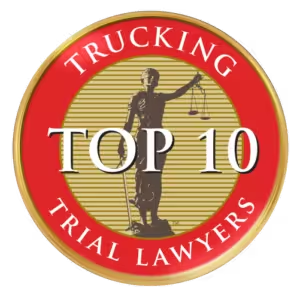
Traffic Fatalities Are On the Rise
Despite fewer people being on the roads since the emergence of the COVID-19 pandemic in 2020, traffic fatalities are on the rise. A staggering 38,680 people were killed on American roadways in 2020. The latest evidence suggests that after decades of safety gains, the pandemic has made U.S. drivers more reckless – more likely to speed, drink or use drugs and leave their seat belts unbuckled. Experts suggest these changes are linked to widespread feelings of isolation, loneliness and depression. Others suggest perhaps people are speeding as a form of rebellion in response to being cooped up, locked down and other undesirable restrictions.
2020 saw a National 7.2% increase in fatalities, with an additional 18% jump in the first six months of 2021. In 2020, for every 100 million miles driven, 1.37 people died, a 23% increase from 2019. In Kansas, the fatality rate per 100 million miles traveled during the first nine months of 2020 escalated to 1.52 deaths, as compared to 1.29 in 2019. Missouri alone saw the deaths of 987 people on the roads in 2020, with speed being a contributing factor in almost 40% of those deaths.
Even more alarming, of the deaths in Missouri in 2020, 128 involved pedestrians and 27 were in construction zones. In some cases, the individuals exited their vehicles on the side of the road in the wake of an incident. There has also been a rise in motorcyclist fatalities in Missouri in 2021. A new law in Missouri put into effect in August of 2020 allowed licensed motorcyclists over the age of 26 to ride without a helmet if they can provide proof of health insurance.
According to Chris Herrick, the director of the Kansas Department of Transportation, “Speed kills. The faster you go, the more force there is and when you do get in a wreck, the worse the wreck is. The risky-behavior people are out and about, and they are the ones more likely to speed. You have less traffic on the roads, so you have more ability to speed.”
On December 9, 2021, two adults were killed, and 2 children were hospitalized after a head-on collision outside of Atchison, Kansas. Neither the two individuals who were killed or the other driver, who sustained serious injuries, were wearing their seat belts.
According to the National Highway Traffic Safety Administration, buckling up is one of the safest choices drivers and passengers can make. According to statistics, the national seat belt use rate was 90.3% in 2020. It is important to understand the potentially fatal consequences of not wearing a seat belt and learn how to make sure you and your family are properly buckled up every time. Of the 22,215 passenger vehicle occupants killed in 2019, 47% were not wearing seat belts. Those who do not wear seat belts face the serious risk of being ejected from their vehicle in the event of a crash and other life-threatening injuries from airbags. The use of seat belts in passenger cars reduces the risk of fatal injury by 45% and reduces the risk of moderate to critical injury by 50%. The use of seat belts in a light truck decreases the risk of fatal injury by 60% and moderate to critical injury by 65%.
Buckling up is the single most effective thing you can do to protect yourself during a crash and airbags are designed to work with seat belts, not replace them. Lap and shoulder belts should be secured across the pelvis and rib cage, which are better able to withstand crash forces than other parts of your body. The shoulder belt should be placed across the middle of your chest and away from your neck and the lap belt should rest across your hips, not your stomach. You should NEVER put the shoulder belt behind your back or under your arm.
Before purchasing a new car, you should check to see if the seat belts are a good fit for you. Ask the dealer about seat belt adjusters, which can help you get the best-personalized fit. If you need a roomier belt, contact your vehicle manufacturer to obtain a seat belt extender. If you drive an older vehicle or classic with lap belts only, you should check with the manufacturer about how to retrofit your car with modern seat belts. Doctors also recommend the continued use of seat belts during pregnancy. And it is recommended that pregnant women adjust their seat to a comfortable, upright position, and keep as much distance as possible between their belly and steering wheel allowing for comfortable reaching the steering wheel and pedals. You should avoid reclining your seat more than necessary to minimize the gap between your shoulders and the seat belt and avoid your belly touching the steering wheel.
Speeding endangers everyone on the road around you. We all have busy lives and places to be, but speed limits are put in place for a reason. Speed can also be a safety concern when you are driving the speed limit, but too fast for conditions, such as bad weather, construction zones, and poorly lit roadways. According to the NHTSA, the consequences of speeding include:
- Greater risk for loss of vehicle control;
- Reduced effectiveness of occupant protection equipment;
- Increased stopping distance after the recognition of a perceived danger;
- Increased degree of crash severity, leading to more severe injuries and/or death;
- Economic implications of speed-related crashes; and
- Decreased fuel economy.
Speeding is a type of aggressive driving behavior. Traffic, running late, anonymity and disregard for others and for the law have been linked to the rise in aggressive driving. Drivers become aggressive in traffic by speeding, changing lanes frequently and becoming upset at anyone who they perceive to be impeding progress. Others drive aggressively because they have too much on their plate and are “running late” for work, school or other such destinations. Due to the perceived shield provided by vehicles, some drivers develop a sense of detachment and become less constrained in their behaviors when they are less likely to be seen by other drivers, or when future interaction with others on the road is not likely. Some drivers have frequent periods of aggression on the roadway and for some, aggressive driving is their usual driving behavior.
Tips for handling aggressive driving include:
- If you are in the left lane and someone wants to pass, move over and let them by.
- Give speeding drivers plenty of space.
- Adjust your driving, accordingly, use judgment to safely steer your vehicle out of the way.
- Call the police if you believe a driver is following you or harassing you.
Driving after drinking or consuming drugs is deadly. In 2019, a drunk-driving crash killed one person every 52 minutes. Approximately 1/3 of all traffic fatalities in the U.S. involve drunk drivers with BACs of 0.08g/dL or higher. It’s illegal to drive drunk in every state. The charges associated with operating a vehicle while under the influence range from misdemeanors to felony offenses and penalties range from revocation of a driver’s license to fines and jail time. A first-time offense can cost a driver upwards of $10,000 in fines and legal fees.
Responsible behavior is simple. If you are drinking, do not drive. Tips include:
- Plan your safe ride home, choose a non-drinking friend as a designated driver or make arrangements for alternative transportation such as a cab, Uber or Lyft.
- If someone you know has been drinking, do not let that person get behind the wheel, take their keys and help them make arrangements for a sober ride home.
- If you drink, do not drive for any reason.
- If you are hosting a party, make sure all guests leave with a sober driver
- Always wear your seat belt, as it’s your best defense against an impaired driver.
- If you see an impaired driver on the road, contact law enforcement. Your actions could save lives.
Unfortunately, with all these precautions, serious injuries and deaths still occur on the roadways. If you or your loved one has been seriously injured or killed in a vehicular collision, you may be entitled to compensation. Kendall Law Group has over 30 years of experience representing injured persons both in and out of court. We offer an always-free case evaluation and are here for you every step of the way. If you would like to speak with an experienced attorney, contact our office at (816) 531-3100, or request a consultation HERE.






